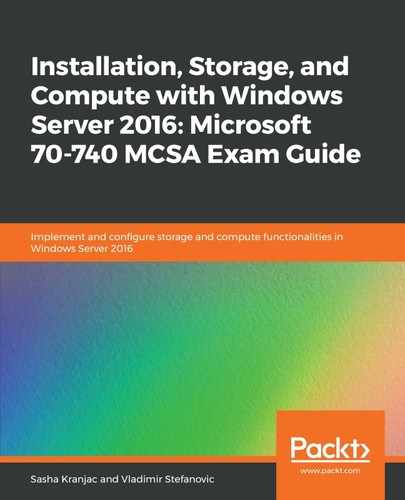You will need a version of Windows Server 2016. This can be a retail version, a volume-licensed version, or an evaluation version with which you can experiment. I suggest you set up your own lab, preferably in a sandboxed environment. You can set up your lab either in Hyper-V or in Microsoft Azure. Additionally, Hyper-V is available on Windows 10, or you can use any other virtualization platform to build your own lab: VMware, Amazon Web Services, VirtualBox, and so on. Be aware that Microsoft Azure does not support some Windows Server roles and features, including the following:
- Dynamic Host Configuration Protocol (DHCP) Server
- Hyper-V (at the time of writing, Hyper-V's role in Azure is supported in all v3 virtual machines, such as Ev3 and Dv3 virtual machines)
- Rights Management Services
- Windows Deployment Services
In upgrade scenarios, you will need Windows Server 2012 or an older version. Trial operating system versions are available at https://www.microsoft.com/en-us/evalcenter/.
Sometimes, when you click on Windows Server 2016 under the Products menu, only a list of Windows Server 2012 products is displayed. This might be a temporary glitch. To display the Windows Server 2016 version, click on the plus sign next to any Windows Server 2012 version and expand the entry. After an automatic refresh, the list will show the Windows Server 2016 versions that are available for evaluation and download. There are three options available: Azure, ISO, and Virtual Lab. Choose whichever suits you best.
